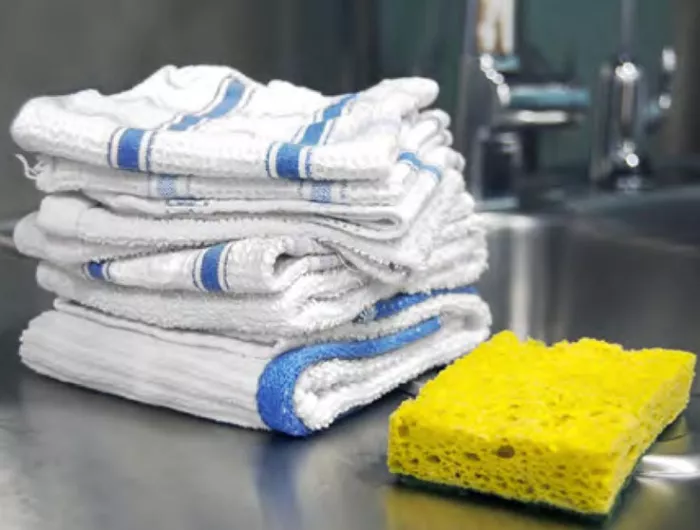When was the last time you sanitized your sponge?

“A moist sponge that is not sanitized daily or replaced often can harbor bacteria and germs that can make you sick,” says Mindy Costello, an environmental health expert and registered sanitarian at NSF International, a nonprofit organization that certifies appliances, food equipment, water filters, and more.
“In our survey of Michigan households, 86 percent of sponges and dishcloths had yeast and mold, 77 percent had coliform bacteria, and 18 percent had Staph bacteria.”
Yikes.
Costello’s advice
“As long as it doesn’t contain any metal, microwave your damp sponge for two minutes every day.” (Make sure it's damp. Otherwise it can catch fire.)
But no matter how you slice it, sponges have a short lifespan. “We recommend throwing them out every two weeks,” says Costello. (Tip: Cut ordinary sponges in half to use fewer over time.)
A less wasteful option: Use a dish brush. Just soak it for a minute every night in diluted bleach (one tablespoon of bleach in one gallon of water), then rinse and air dry. (NSF International hasn’t tested the bleach method on sponges.)
To clean kitchen surfaces, use a fresh dishcloth every day. “They can be easily washed with bleach in a washing machine,” Costello notes.
The bottom line
Whether you use a sponge, dish brush, or dishcloth, sanitize it daily.
(Have questions about COVID-19 and disinfecting your kitchen? Read our tips.)
Photo: Jorge Bach/CSPI.
Tags
Topics

